Upgrading a house into your dream home requires expertise, creativity, and meticulous planning, especially in the vibrant and diverse city of Miami.
At Blue Builder, we specialize in full house remodeling, bringing innovative design solutions and high-quality craftsmanship to every project.
Our comprehensive approach ensures that each aspect of your home renovation is seamlessly integrated, reflecting your unique style while enhancing functionality and comfort.
From the initial consultation to the final touches, we are committed to exceeding your expectations and making your Miami home a true masterpiece.
Full House Remodeling in Miami
Remodeling a house in Miami involves much more than just changing its appearance. It’s about enhancing the functionality, comfort, and value of your home. Given Miami’s unique climate and architectural styles, remodeling requires a specialized approach that takes these factors into account. Whether you’re aiming to modernize an outdated home, add more living space, or simply increase its market value, understanding the local housing market and the importance of remodeling is crucial.
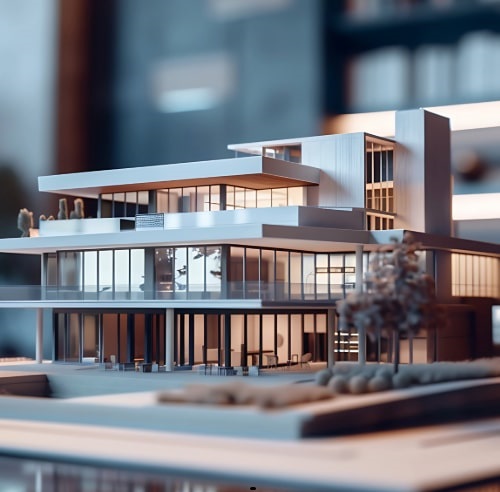
Understanding the Miami Housing Market
Miami’s housing market is dynamic and diverse, with a mix of historic homes, contemporary builds, and everything in between.
The city’s tropical climate influences the materials and designs used in remodeling projects.
Homes here need to withstand high humidity, hurricanes, and intense sunlight.
This means that choosing the right materials and construction methods is essential for durability and longevity.
Moreover, the vibrant real estate market in Miami makes remodeling an attractive option for homeowners looking to boost their property value.
By staying updated with the latest trends and demands, you can ensure that your remodel aligns with what buyers are looking for, should you decide to sell in the future.
Importance of Remodeling in Miami
Remodeling in Miami is not just about aesthetics; it’s about adapting your home to suit your lifestyle and the local environment.
Upgrading your home’s infrastructure, such as electrical and plumbing systems, can significantly improve safety and efficiency.
Energy-efficient upgrades, like installing solar panels or better insulation, can reduce your utility bills and environmental footprint.
Additionally, remodeling offers the opportunity to personalize your living space to match your taste and preferences.
Whether it’s creating an open-plan living area, adding a luxurious bathroom, or revamping the kitchen, a well-executed remodel can transform your house into a dream home.
Plus, in a competitive market like Miami, a beautifully remodeled home can stand out and attract potential buyers, making it a smart investment.
Designing Your Dream Miami Home with Remodeling Services by Blue Builder
Designing your home is where your vision starts to take shape. This phase involves working with architects and designers to create a plan that balances aesthetics, functionality, and budget. The design process is exciting and creative, allowing you to personalize your space to match your lifestyle and preferences. From selecting the right materials to choosing the perfect finishes, every decision you make will contribute to the overall look and feel of your remodeled home.

We Are Working with Remodeling Architects and Designers
Collaborating with architects and designers is crucial to bringing your dream home to life.
As professionals, we have the expertise to translate your ideas into practical designs that meet local building codes and regulations.
We start by discussing your goals, preferences, and budget with them.
Be open to their suggestions, as they can provide valuable insights into space optimization, structural integrity, and design trends.
The design process typically begins with conceptual sketches, followed by more detailed plans and 3D renderings.
This allows you to visualize the final outcome and make any necessary adjustments before construction begins.
Regular meetings with your design team will ensure that everyone is on the same page and that your vision is accurately represented in the plans.
A well-designed home is not only beautiful but also functional and sustainable, making it a joy to live in for years to come.
Selecting Materials and Finishes for Your Remodeling
Choosing the right materials and finishes is essential for both the aesthetic appeal and durability of your remodel.
In Miami, the climate plays a significant role in these decisions.
Opt for materials that can withstand high humidity, salt air, and intense sunlight.
For instance, consider moisture-resistant flooring options like tile or engineered wood, and choose paints and finishes that offer UV protection.
Sustainability is another important factor to consider.
Eco-friendly materials such as reclaimed wood, bamboo, and recycled glass not only reduce your environmental footprint but also add a unique character to your home.
When it comes to finishes, pay attention to details like cabinetry, countertops, fixtures, and lighting.
These elements can dramatically impact the overall look and feel of your space.
Visit showrooms, request samples, and consult with your design team to make informed decisions.
By carefully selecting materials and finishes, you can create a home that is both stylish and resilient.
Planning Your Full House Remodel in Miami
Planning is the cornerstone of any successful remodeling project. It sets the stage for everything that follows and ensures that your vision is translated into reality without unnecessary hiccups. The planning phase involves setting a realistic budget, choosing the right contractor, and making critical decisions about the design and scope of the project. By laying a solid foundation during this stage, you can avoid common pitfalls and keep your remodel on track.

Setting a Remodel Budget – A True One!
Creating a budget is one of the most critical steps in planning your remodel.
It’s easy to get carried away with ideas and designs, but without a clear budget, costs can quickly spiral out of control.
Start by determining how much you’re willing to spend on the project. Consider all aspects, including materials, labor, permits, and contingency funds for unexpected expenses.
Researching the average costs of similar projects in Miami can provide a ballpark figure to work with. Prioritize your spending based on the elements that matter most to you.
For instance, if a high-end kitchen is a must-have, you might need to scale back on other areas. Use spreadsheets or budgeting apps to keep track of your expenses and adjust as needed.
Staying within your budget requires discipline and regular monitoring, but it’s essential for the overall success of your remodel.
Choosing the Right Remodeling Contractor from Miami
Selecting the right remodeling contractor in Miami can make or break your project.
A skilled, reliable contractor will not only execute your vision but also help navigate the complexities of the remodeling process.
Start by seeking recommendations from friends, family, or neighbors who have recently completed similar projects.
Online reviews and ratings on platforms like Yelp and Angie’s List can also provide valuable insights.
Once you have a shortlist of potential contractors, check their credentials, including licensing, insurance, and certifications.
Schedule interviews to discuss your project in detail, and ask for references from past clients.
A good contractor should be able to provide a detailed proposal outlining the scope of work, timeline, and cost estimates.
Communication is key, so choose someone who listens to your needs, offers constructive suggestions, and is transparent about potential challenges.
By taking the time to find the right contractor, you set the stage for a smooth and successful remodel.
For instance, look at our reviews, license, certification. At Blue Builder, we have them all, and that’s one of the reason Miami homeowners choose us.
Permits and Regulations for Remodeling in Miami
Understanding and complying with local permits and regulations is a critical aspect of any remodeling project. In Miami, the building codes are stringent due to the city’s unique climate and environmental concerns. Ensuring that your remodel meets these standards is essential for both legal and safety reasons. This section covers how to navigate the permitting process and the various environmental and safety considerations involved in remodeling your home.
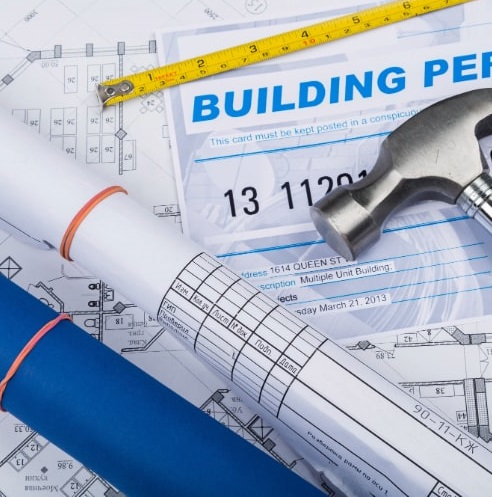
Navigating Miami Building Codes
Miami’s building codes are designed to ensure the safety and durability of structures, especially in the face of hurricanes and other severe weather conditions.
Before starting your remodel, you’ll need to obtain the necessary permits from the local building department.
This process involves submitting detailed plans and specifications for review.
It’s advisable to work with a contractor or architect familiar with Miami’s codes, as they can guide you through the requirements and ensure that your plans comply.
Typical permits you might need include those for structural changes, electrical and plumbing work, and any additions or significant alterations to the existing structure.
Inspections are also part of the permitting process, and your project will be subject to several inspections at different stages of construction.
Ensuring that your remodel is up to code not only protects you from potential legal issues but also ensures the safety and longevity of your home.
Environmental and Safety Considerations in Remodeling
Environmental and safety considerations are paramount in any remodeling project, especially in a city like Miami with its specific challenges.
From an environmental perspective, choosing sustainable materials and energy-efficient systems can significantly reduce your home’s carbon footprint.
Consider installing solar panels, energy-efficient windows, and high-efficiency HVAC systems to improve your home’s energy performance.
Safety is another critical aspect, particularly in terms of hurricane preparedness.
This might involve reinforcing the roof, installing impact-resistant windows and doors, and ensuring that all structural elements can withstand high winds and flooding.
Additionally, indoor air quality is an important consideration, especially during and after construction.
Use low-VOC (volatile organic compounds) paints and finishes to minimize harmful emissions. Proper ventilation and air filtration systems can also help maintain a healthy indoor environment.
By addressing these environmental and safety considerations, you can ensure that your remodeled home is both eco-friendly and secure.
Demolition and Preparation for Remodeling
Demolition marks the beginning of the physical transformation of your home. It’s an exciting yet critical phase where careful planning and execution are paramount to ensure a smooth transition into the construction phase. This stage involves pre-demolition inspections to identify any potential hazards and safe, efficient demolition practices to prepare your home for the upcoming renovations.
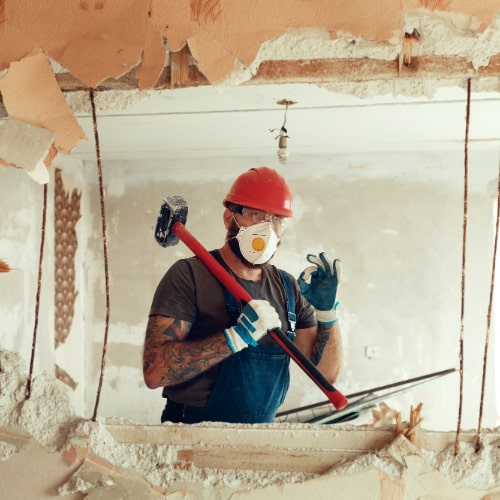
Pre-Demolition Inspections in Miami
Before any demolition begins, conducting thorough pre-demolition inspections is essential.
These inspections help identify potential hazards such as asbestos, lead paint, or structural weaknesses that need to be addressed to ensure the safety of the workers and the integrity of the project.
Professional inspectors will assess the building for hazardous materials, evaluate the condition of existing structures, and determine the safest and most efficient way to proceed with demolition.
Identifying these issues beforehand allows you to plan appropriately for their removal or mitigation, ensuring compliance with safety regulations and preventing delays.
Additionally, these inspections provide an opportunity to salvage any reusable materials or fixtures that can be repurposed in the remodel, saving costs and reducing waste.
By addressing potential hazards early, you can ensure a safe and smooth demolition process, setting the stage for successful construction.
Safe and Efficient Demolition Practices by Blue Builder Miami
Demolition might seem straightforward, but it requires a strategic approach to ensure safety and efficiency.
The first step involves securing the site by disconnecting utilities such as water, gas, and electricity to prevent accidents.
Protecting adjacent areas of the home from dust and debris is also crucial, especially if parts of the house will remain occupied during the renovation.
Professional demolition crews use specialized equipment and techniques to dismantle structures methodically.
This might involve using sledgehammers for smaller structures or heavy machinery for larger ones. Safety gear, including helmets, goggles, and gloves, is mandatory for all workers.
Dust control measures, such as water sprays and air filtration systems, are also implemented to maintain a safe working environment.
Waste management is another important aspect of the demolition process.
Proper disposal of debris, especially hazardous materials, must comply with local regulations.
Recycling and salvaging materials can also reduce waste and potentially lower costs.
By following safe and efficient demolition practices, you ensure a smooth transition to the construction phase, minimizing risks and delays.
Structural Changes and Additions for Full House Remodeling in Miami
Structural changes and additions form the backbone of any significant remodeling project. This phase involves altering or reinforcing the existing structure to enhance functionality, expand living spaces, or improve the overall integrity of the home. Proper planning and execution of structural modifications are crucial to ensure the safety, stability, and longevity of the remodeled house.
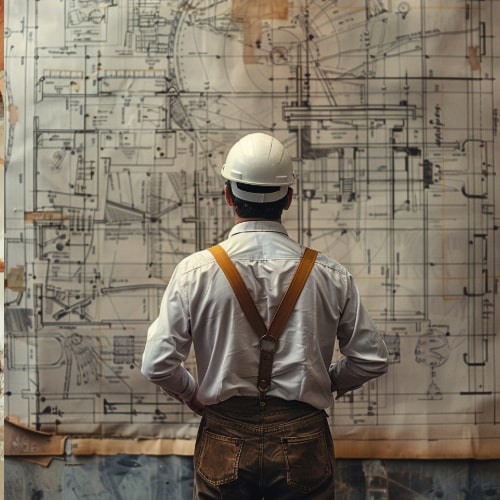
Expanding Living Spaces of Your Miami House
One of the most impactful aspects of a full house remodel is the ability to expand living spaces.
This can involve adding new rooms, extending existing ones, or creating open-plan areas that enhance the flow and usability of the home.
Expanding your living space not only increases comfort but also adds significant value to your property.
The process begins with a detailed assessment of the existing structure to determine the feasibility of expansions.
Architectural plans are then developed, detailing the dimensions, layout, and structural requirements of the new spaces.
Common additions include new bedrooms, larger kitchens, or additional bathrooms.
Open-plan designs, which remove walls to create larger, more versatile living areas, are also popular.
Construction involves not just building new walls and floors but also integrating these additions seamlessly with the existing structure.
This might require reinforcing foundations, installing new support beams, or upgrading utilities to handle the increased load.
By carefully planning and executing these expansions, you can create spacious, functional living areas that enhance your home’s appeal and usability.
Reinforcing Structural Integrity – A Blue Builder Pact
Ensuring the structural integrity of your home is paramount, especially when making significant modifications.
Reinforcing existing structures involves strengthening key elements such as foundations, walls, and roofs to ensure they can support the new loads and withstand Miami’s challenging climate conditions.
Foundation reinforcement might involve underpinning existing footings, adding new piers, or pouring additional concrete to strengthen the base of the house.
Walls may need to be reinforced with additional framing or structural sheathing, while roofs might require new trusses or beams to support any new additions or changes.
Another critical aspect is addressing any existing structural issues, such as cracks, settling, or water damage, before proceeding with the remodel.
This ensures that the new construction is built on a solid, stable foundation.
Using high-quality materials and adhering to strict construction standards is essential for long-term durability.
By focusing on reinforcing structural integrity, you can ensure that your remodeled home is safe, stable, and capable of withstanding the test of time.
Electrical and Plumbing Upgrades of Your Miami Home
Upgrading the electrical and plumbing systems is a vital part of any full house remodel. These upgrades not only improve the safety and efficiency of your home but also bring it up to modern standards. Whether it’s installing new wiring and outlets or updating plumbing fixtures and pipes, these improvements can significantly enhance the functionality and comfort of your living space.

Modernizing Electrical Systems
Modernizing your home’s electrical system is crucial for safety and convenience.
Older homes often have outdated wiring, insufficient outlets, and inadequate capacity to handle the demands of modern appliances and electronics.
Upgrading the electrical system involves replacing old wiring, installing new outlets and switches, and upgrading the electrical panel to support increased load.
Start by having a licensed electrician conduct a thorough inspection of your existing system.
This helps identify any outdated components or potential hazards. Rewiring involves replacing old, potentially unsafe wiring with new, code-compliant materials.
Adding more outlets, especially in areas like the kitchen, living room, and home office, can reduce the need for extension cords and provide convenient access to power.
Upgrading the electrical panel ensures your home can handle the increased load from modern appliances, HVAC systems, and other electronic devices.
This might also include installing smart home systems that allow you to control lighting, security, and climate remotely.
By modernizing your electrical system, you improve safety, efficiency, and convenience, making your home more comfortable and adaptable to your needs.
Updating Plumbing Fixtures and Piping
Updating the plumbing system is another critical aspect of a full house remodel.
Old pipes, outdated fixtures, and inefficient plumbing systems can lead to leaks, water damage, and high utility bills.
Modernizing your plumbing involves replacing old pipes, installing new fixtures, and ensuring the system meets current codes and standards.
Begin with a thorough inspection by a licensed plumber to assess the condition of your existing system.
This helps identify any leaks, corrosion, or outdated materials that need to be replaced. Replacing old pipes with new, durable materials like PEX or copper can prevent leaks and improve water quality.
Updating plumbing fixtures such as faucets, showerheads, and toilets with water-efficient models can significantly reduce water consumption and lower utility bills.
Consider installing features like tankless water heaters, which provide hot water on demand and are more energy-efficient than traditional models.
Additionally, modern plumbing systems can include smart features like leak detection sensors and water flow monitors that help prevent damage and conserve resources.
By updating your plumbing system, you enhance the functionality, efficiency, and sustainability of your home.
Interior House Remodeling in Miami
Interior remodeling transforms the heart of your home, breathing new life into spaces like the kitchen and bathroom. These areas not only enhance the functionality and aesthetic appeal of your home but also significantly increase its value. This section delves into the details of kitchen renovation and bathroom transformation, providing insights into how to achieve a stunning and practical makeover.
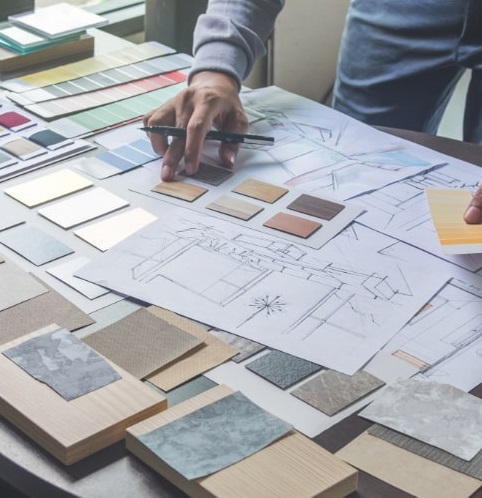
Kitchen Remodeling in Miami
The kitchen is often considered the heart of the home, and renovating it can drastically improve both its functionality and aesthetic appeal.
A kitchen renovation involves several key components, from layout redesigns to the selection of materials and appliances.
Layout and Design of Your Kitchen Remodel
The layout of your kitchen plays a crucial role in its functionality. Common layouts include the U-shaped, L-shaped, and galley designs, each with its own advantages.
Open-plan kitchens are increasingly popular as they create a seamless flow between the kitchen and living areas.
When redesigning the layout, consider the kitchen triangle concept, which ensures efficient movement between the stove, sink, and refrigerator.
Incorporating ample storage solutions is essential for a clutter-free kitchen.
This can include installing cabinets that reach the ceiling, pull-out pantry shelves, and deep drawers for pots and pans.
An island or breakfast bar can provide additional workspace and seating, making the kitchen more versatile.
Materials and Appliances for Kitchen Upgrade
Selecting the right materials and appliances is critical for both aesthetics and functionality.
Countertop materials like granite, quartz, and marble offer durability and a high-end look, while options like laminate provide cost-effective alternatives.
Backsplashes can add a splash of color and personality, with materials ranging from classic subway tiles to modern glass or metal.
Appliances are another major consideration.
Energy-efficient models not only reduce utility bills but also align with sustainable living practices.
Stainless steel appliances are popular for their sleek appearance and durability.
When choosing appliances, consider smart features that offer convenience, such as refrigerators with built-in cameras or ovens with Wi-Fi connectivity.
Bathroom Remodeling in Miami
Upgrading your bathroom can turn it into a spa-like retreat, enhancing both comfort and style.
This process involves updating fixtures, enhancing storage, and selecting finishes that create a cohesive and luxurious look.
Fixtures and Fittings in Bathroom Remodel
Upgrading bathroom fixtures can dramatically change the space’s look and functionality.
Consider replacing old faucets, showerheads, and toilets with modern, water-efficient models.
Rainfall showerheads, freestanding tubs, and dual-flush toilets are popular choices that add a touch of luxury while conserving water.
Lighting is another important aspect.
Layered lighting, which includes ambient, task, and accent lighting, can create a warm and inviting atmosphere.
Installing dimmable lights allows for adjustable illumination, perfect for creating a relaxing environment.
Bathroom Tiles and Finishes
Choosing the right tiles and finishes is crucial for achieving the desired aesthetic.
Porcelain and ceramic tiles are popular for their durability and wide range of styles.
For a more luxurious feel, consider natural stone tiles like marble or travertine.
Floor-to-ceiling tiles in the shower area can make the space look larger and more cohesive.
Vanities and storage solutions also play a significant role.
Floating vanities can give the illusion of more space, while built-in cabinets provide ample storage for toiletries and towels.
Mirrors with integrated lighting and anti-fog features are both practical and stylish.
By carefully selecting fixtures and finishes, you can create a bathroom that is both functional and beautiful.
Exterior Home Upgrades in Miami
Exterior upgrades are essential for enhancing your home’s curb appeal and functionality. These improvements not only make your home more attractive but also increase its value and durability. This section focuses on enhancing curb appeal and developing outdoor living spaces, providing practical tips and ideas for transforming your home’s exterior.
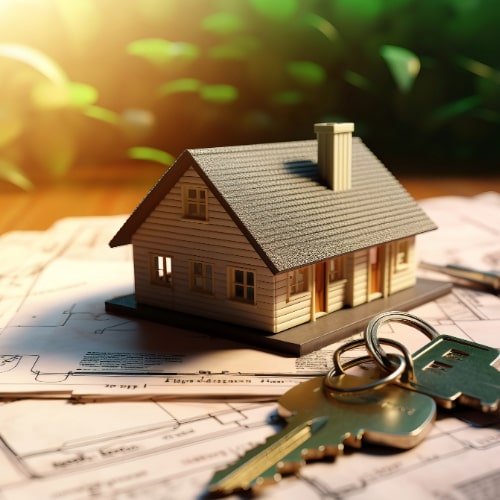
Enhancing Curb Appeal
Curb appeal is the first impression your home makes, and enhancing it can significantly increase your property’s value and attractiveness. Simple changes like painting, landscaping, and updating the front door can have a profound impact.
Painting and Siding
A fresh coat of paint or new siding can rejuvenate your home’s appearance. Choose colors that complement your home’s architecture and surroundings. Light colors can make a home appear larger, while darker shades add a touch of elegance. High-quality, weather-resistant paint or siding materials like fiber cement or vinyl can protect your home from the elements and reduce maintenance costs.
Front Door and Windows
The front door is a focal point of your home’s exterior. Replacing an old door with a new, stylish one can enhance curb appeal. Consider options with glass inserts or sidelights to add natural light. Updating windows with energy-efficient models not only improves aesthetics but also boosts energy savings and comfort.
Landscaping and Outdoor Living Spaces
Creating inviting outdoor spaces extends your living area and provides a perfect setting for relaxation and entertainment. Thoughtful landscaping and well-designed outdoor living spaces can transform your yard into an oasis.
Landscaping
Landscaping involves selecting plants, trees, and hardscapes that enhance your home’s exterior.
Native plants are a great choice as they require less water and maintenance. Incorporating a mix of shrubs, flowers, and ground cover adds texture and color to your yard. Pathways made of stone or pavers can guide visitors and add a decorative element.
Adding features like a garden bench, water fountain, or birdbath can create focal points and enhance the ambiance. Proper lighting, such as solar lights along pathways or spotlights on trees, can highlight landscaping features and improve safety.
Outdoor Living Spaces
Outdoor living spaces, such as patios, decks, or pergolas, provide functional and attractive areas for entertaining and relaxation. A well-designed patio with comfortable seating, an outdoor kitchen, and a dining area can serve as an extension of your indoor living space. Pergolas or gazebos offer shade and define outdoor areas, making them more usable throughout the year.
Adding elements like a fire pit or an outdoor fireplace can create a cozy atmosphere for evening gatherings. For a luxurious touch, consider features like a hot tub, pool, or outdoor shower. By thoughtfully designing your outdoor spaces, you can create a versatile and inviting environment that enhances your home’s overall appeal and functionality.
Conclusion – Everything in This Article Is From Our Experience & Expertise. Full House Remodel in Miami by Blue Builder
In conclusion, a full house remodel in Miami is a comprehensive process that involves meticulous planning, skilled execution, and attention to detail. By understanding the local market, setting a realistic budget, choosing the right professionals, and following best practices in design, construction, and finishing touches, you can transform your home into a beautiful, functional, and valuable space. Whether you’re upgrading your home for personal enjoyment or to increase its market value, a well-executed remodel is a worthwhile investment that offers lasting benefits.

FAQ
How long does a full house remodel take in Miami?
The duration of a full house remodel in Miami can vary significantly based on the scope of the project, the size of the home, and the availability of materials and contractors. On average, a full remodel can take anywhere from 3 to 6 months. Complex projects involving structural changes or additions may extend this timeline.
What is the average cost of a full house remodel in Miami?
The cost of a full house remodel in Miami depends on several factors, including the size of the home, the extent of the renovations, and the quality of materials and finishes. On average, homeowners can expect to spend between $40,000 and $150,000 or more. High-end remodels with luxury finishes can exceed this range.
Do I need a permit for every type of remodeling work?
Most significant remodeling projects in Miami require permits, especially those involving structural changes, electrical and plumbing upgrades, and additions. Minor cosmetic changes, like painting or installing new flooring, typically do not require permits. It’s essential to check with local building authorities to determine the specific requirements for your project.
How do I choose the best contractor for my remodel?
Choosing the best contractor involves thorough research and vetting. You can choose us, like other Miami homeowners did, or: start by seeking recommendations from friends, family, or online reviews. Verify the contractor’s credentials, including licensing, insurance, and certifications. Schedule interviews to discuss your project in detail and request references from past clients. A good contractor should be communicative, transparent, and have a proven track record of successful projects.
Can I live in my house during the remodel?
Whether you can live in your house during the remodel depends on the scope of the work and your tolerance for disruption. For extensive remodels involving multiple areas of the home, it might be more practical to temporarily relocate. For smaller, less intrusive projects, you may be able to stay in your home, but expect some inconvenience and noise.
What are the common challenges in house remodeling?
Common challenges in house remodeling include unexpected structural issues, delays in obtaining permits, supply chain disruptions, and unforeseen costs. Proper planning, hiring experienced professionals, and maintaining flexibility can help mitigate these challenges. Regular communication with your contractor is essential to address issues promptly and keep the project on track.
How do I ensure my remodel stays within budget?
To ensure your remodel stays within budget, start with a detailed and realistic budget that includes a contingency fund for unexpected expenses. Monitor expenses regularly and adjust as needed. Prioritize spending on essential elements and consider cost-effective alternatives for non-essential items. Clear communication with your contractor about your budget constraints and expectations can also help manage costs effectively.
